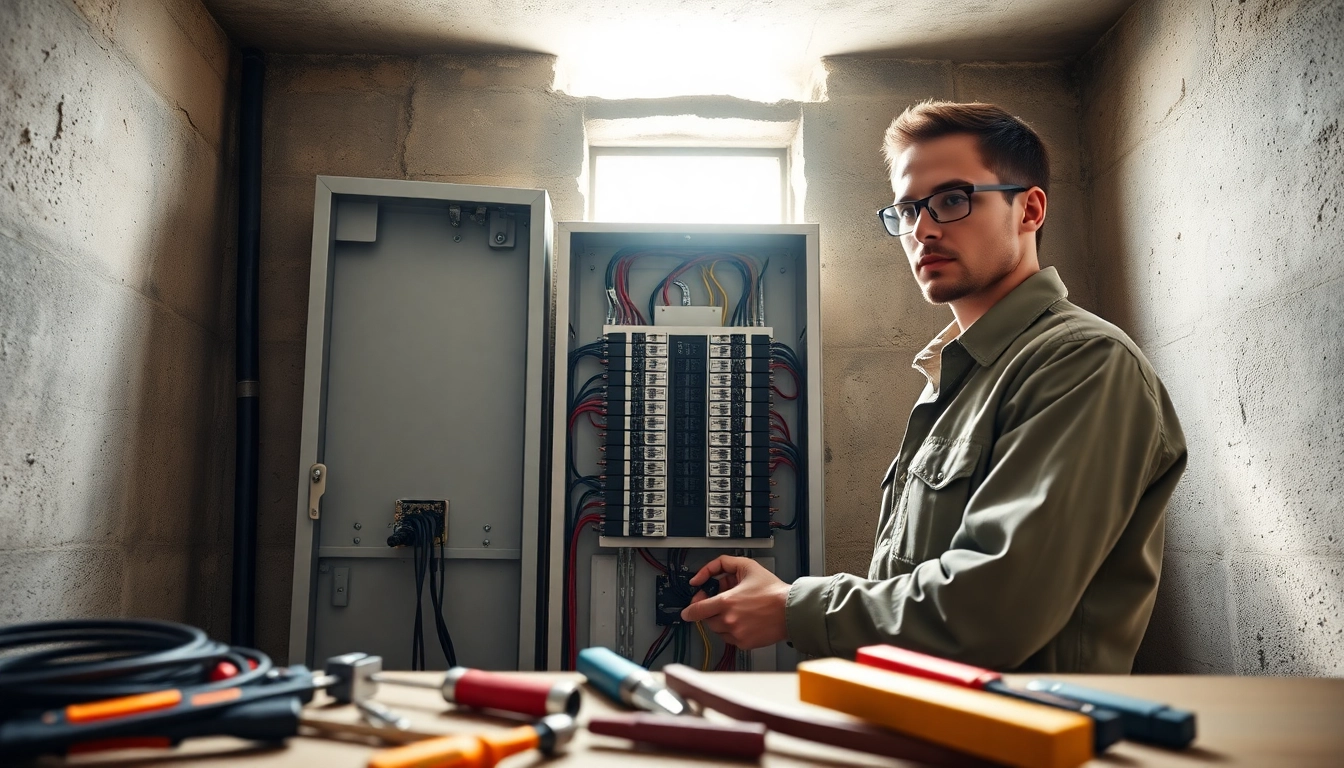Understanding Electrical Panels
Every home relies on a well-functioning Electrical Panel to ensure the efficient distribution of electricity throughout its circuits. Often referred to as a breaker box, fuse box, or distribution board, this fundamental component acts as the central hub that manages the power flow from the electrical grid to various devices and appliances in your home. Understanding the significance of electrical panels is crucial for every homeowner, as it can affect both safety and functionality.
What is an Electrical Panel?
An electrical panel serves as the point of entry for electricity from the utility company and distributes it across various circuits throughout your home. It houses multiple circuit breakers or fuses that protect individual circuits from overload and short circuits. Essentially, the electrical panel can be seen as the heart of your home’s electrical system, regulating and managing power distribution effectively.
Electrical panels vary in design and capability depending on the electric load they must handle. Standard panels in most residential homes usually range from 100 amps to 400 amps, although higher capacity panels may be required in larger homes or those with extensive electrical needs, such as multiple high-demand appliances.
Common Types of Electrical Panels
Several types of electrical panels are commonly used in residential applications:
- Main Breaker Panels: These panels contain a main switch that controls power to all circuits. It is usually found near the main service entrance of the home.
- Sub-Panels: These are secondary panels that allow for additional circuits in larger homes or when a specific area requires more power. They are fed from the main panel.
- Combination Panels: A blend of circuit breakers and fuses, combination panels provide flexible options for homeowners who might want the benefits of both systems.
- Smart Electrical Panels: Newer technology allows for smart panels to offer real-time energy monitoring and can interface with home automation systems.
Understanding the type of electrical panel installed in your home can help determine if it meets your current electrical demands or if an upgrade is necessary.
Importance of Upgrading Your Electrical Panel
Upgrading your electrical panel is not just about improving aesthetics; it ensures your home’s electrical system can safely accommodate modern electrical loads. Older panels may not be capable of supporting the power needs of newer appliances and electronic devices, making it essential for safety and functionality.
Modern electrical panels often come equipped with enhanced safety features and enable homeowners to utilize energy-efficient appliances and smart home technologies. Furthermore, an upgraded panel can improve the resale value of your home, making it more appealing to potential buyers.
Signs Your Electrical Panel Needs an Upgrade
Knowing when to upgrade your electrical panel can prevent potential safety hazards and ensure your home remains powered efficiently. Here are key indicators that your electrical panel may require an upgrade:
Frequent Circuit Breaker Trips
One of the most common signs of an overloaded electrical panel is frequent trips of circuit breakers. If the breakers in your panel continually trip, it indicates that the electrical demand in your home exceeds the panel’s capacity. This situation not only disrupts your daily activities but also poses a significant fire hazard. Consider upgrading your panel if this problem persists.
Buzzing or Flickering Lights
If you notice buzzing noises or flickering lights, it could signify a malfunction in the electrical panel or the circuits it controls. Such symptoms often indicate loose connections or outdated wiring, both of which are good reasons to consult with a qualified electrician about upgrading.
Old or Outdated Panel Models
Electrical codes and safety standards evolve over time, rendering older panels less efficient and more prone to safety issues. If your home’s electrical panel is more than 25 years old, it’s advised to evaluate its condition and consider an upgrade to meet contemporary safety standards and electrical demands.
The Upgrade Process Explained
The process of upgrading an electrical panel can seem daunting, but understanding the steps involved can alleviate much of the anxiety. Below is an overview of what to expect:
Steps for Planning Your Upgrade
The first step in planning an electrical panel upgrade is to assess your current electrical needs. Take into account your home’s appliances, the number of circuits in use, and the total amperage that your household requires. Consulting with a professional electrician will help to evaluate these needs accurately and develop a tailored plan for an upgrade.
Choosing the Right Electrical Panel
When selecting a new electrical panel, you’ll want to consider both capacity and features. Standard panel options generally range from 100 to 400 amps, but depending on your home’s requirements, you may need to choose a higher capacity. Additionally, evaluating features such as energy efficiency and built-in safety mechanisms can help in selecting a panel best suited for your home.
Necessary Permits and Inspections
Electrical upgrades often require permits from local authorities to ensure compliance with safety codes. Working with a licensed electrician ensures that all necessary permits are obtained and that the installation complies with current regulations. Additionally, after the installation is completed, an inspection might be required to affirm that the work meets safety standards.
Benefits of a Modern Electrical Panel
Investing in a modern electrical panel offers numerous benefits, enhancing your home’s safety and efficiency:
Enhanced Safety Features
Modern electrical panels are designed with advanced safety features that provide superior protection against electrical faults. These panels include ground fault circuit interrupters (GFCIs) and arc fault circuit interrupters (AFCIs), which can detect discrepancies in electrical flow and cut power to prevent fires or electrocutions.
Increased Energy Efficiency
Upgrading to a new electrical panel can increase your home’s energy efficiency by optimizing power distribution. Efficient panels can reduce wasted electricity and may even qualify for energy-saving incentives or rebates from utility providers. As a result, you might notice a decrease in your energy bills post-upgrade.
Improved Electrical System Reliability
A modern electrical panel can dramatically improve your home’s overall electrical reliability. It can handle the demands of today’s appliances, reduce the likelihood of overloads, and minimize outages, ensuring a constant and reliable power supply for all your home’s needs.
Cost Considerations for Electrical Panel Upgrades
When considering an upgrade to your electrical panel, it’s essential to contemplate the associated costs. Here are significant factors to consider:
Average Costs of Different Panel Types
The costs for upgrading an electrical panel can vary significantly depending on the type and capacity. On average, homeowners might expect to pay anywhere from $1,500 to $3,000 for a new panel installation, including labor. Higher-capacity panels, such as those over 400 amps, can push costs upwards of $4,000 to $5,000 based on the complexity of the installation and local market conditions.
Factors Affecting Upgrade Costs
Several factors can influence the overall cost of upgrading an electrical panel:
- Location: Costs may vary by region due to labor rates and local codes.
- Panel Type: Smart panels with advanced features can cost more than traditional options.
- Electrical Wiring: If the existing wiring needs upgrades or replacements, costs will increase.
- Access: Difficulty in accessing the panel location can also impact labor costs.
Financing Options and Incentives
Many homeowners look for financing options when upgrading their electrical panels due to the typically high upfront costs. Various financial solutions, such as home equity lines of credit (HELOCs) or personal loans, can help spread the expense over time. Additionally, utility companies or local governments may offer rebates or incentives for panel upgrades that enhance energy efficiency, which can alleviate costs.







